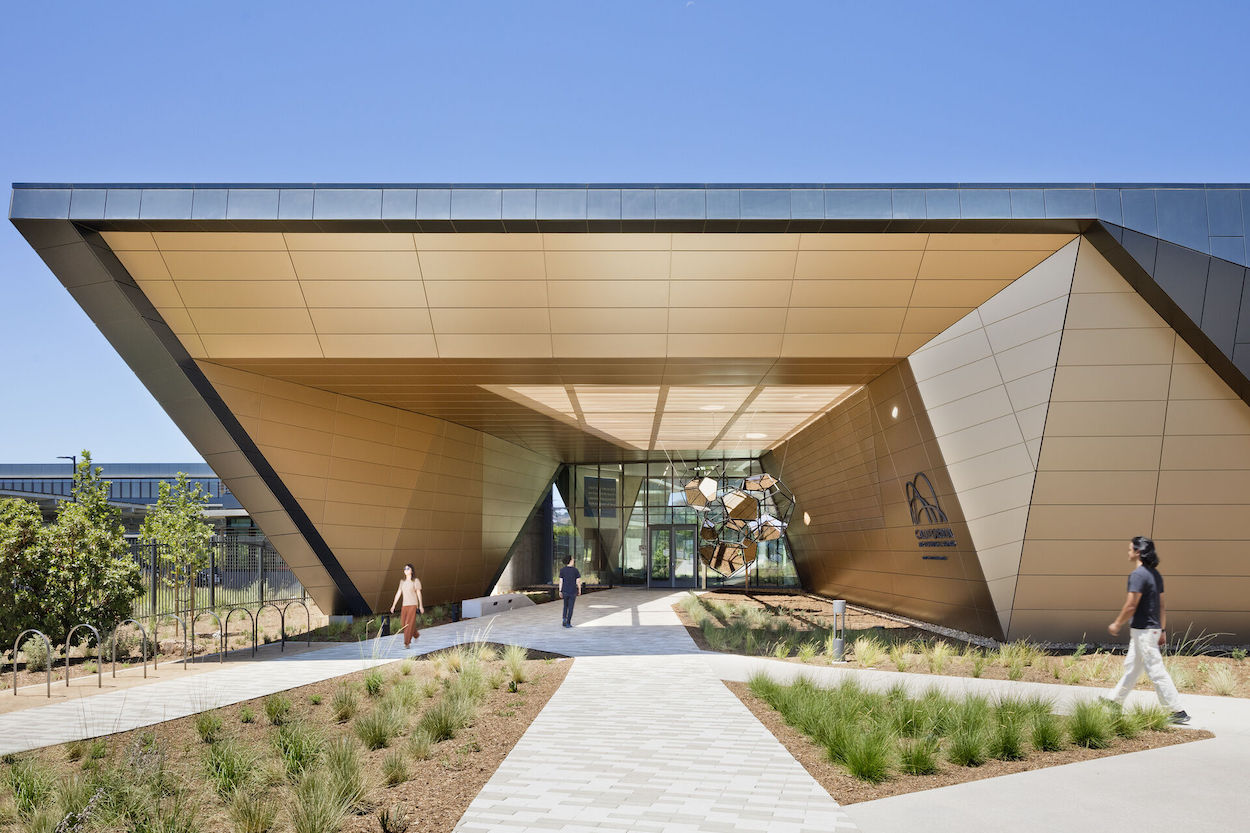The California Air Resources Board (CARB) is tasked with ensuring that all vehicles comply with the state’s latest emissions standards, the country’s highest despite the air quality being the lowest. In order to do its job effectively, CARB tests a variety of vehicle engines, from cars to jet skis to lawn mowers. To say that CARB gets results is an understatement: It pioneered the catalytic converter in the ‘70s and caught Volkswagen installing devices in diesel vehicles to cheat emissions testing, a major scandal that caused a class-action lawsuit.
Having outgrown its former facilities—five aging locations spread across Southern California—the agency enlisted ZGF Architects to construct a state-of-the-art headquarters fit for the modern age. Located in Riverside, the 400,000-square-foot campus of offices and labs sprawls across 18 acres and has transformed how CARB functions on a day-to-day basis. Besides being the world’s most advanced vehicle emissions testing and research lab, it’s the largest true net-zero energy facility of its type.
Essentially, the building produces more energy than it uses and offsets whatever carbon emissions that arise from testing engines all day. The new headquarters was also designed to adapt to the rapidly evolving automotive industry’s unexpected turns. Besides being able to test traditional internal combustion engines, the facility is robust enough to accommodate emerging tech, such as hydrogen-powered battery-fuel cells that haven’t quite caught on in the mainstream market yet. And even though CARB only oversees California, the EPA treats them as a Petri dish for the entire country. Upgrading to a state-of-the-art facility with such increased capabilities will see wide-ranging benefits.

